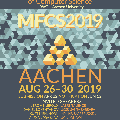We propose a simple and time-optimal algorithm for property testing a graph for its conductance in the CONGEST model. Our algorithm takes only $O(\log n)$ rounds of communication (which is known to be optimal), and consists of simply running multiple random walks of $O(\log n)$ length from a certain number of random sources, at the end of which nodes can decide if the underlying network is a good conductor or far from it. Unlike previous algorithms, no aggregation is required even with a smaller number of walks. Our main technical contribution involves a tight analysis of this process for which we use spectral graph theory. We introduce and leverage the concept of sticky vertices which are vertices in a graph with low conductance such that short random walks originating from these vertices end in a region around them. The present state-of-the-art distributed CONGEST algorithm for the problem by Fichtenberger and Vasudev [MFCS 2018], runs in $O(\log n)$ rounds using three distinct phases : building a rooted spanning tree (\emph{preprocessing}), running $O(n^{100})$ random walks to generate statistics (\emph{Phase~1}), and then convergecasting to the root to make the decision (\emph{Phase~2}). The whole of our algorithm is, however, similar to their Phase~1 running only $O(m^2) = O(n^4)$ walks. Note that aggregation (using spanning trees) is a popular technique but spanning tree(s) are sensitive to node/edge/root failures, hence, we hope our work points to other more distributed, efficient and robust solutions for suitable problems.
翻译:暂无翻译




